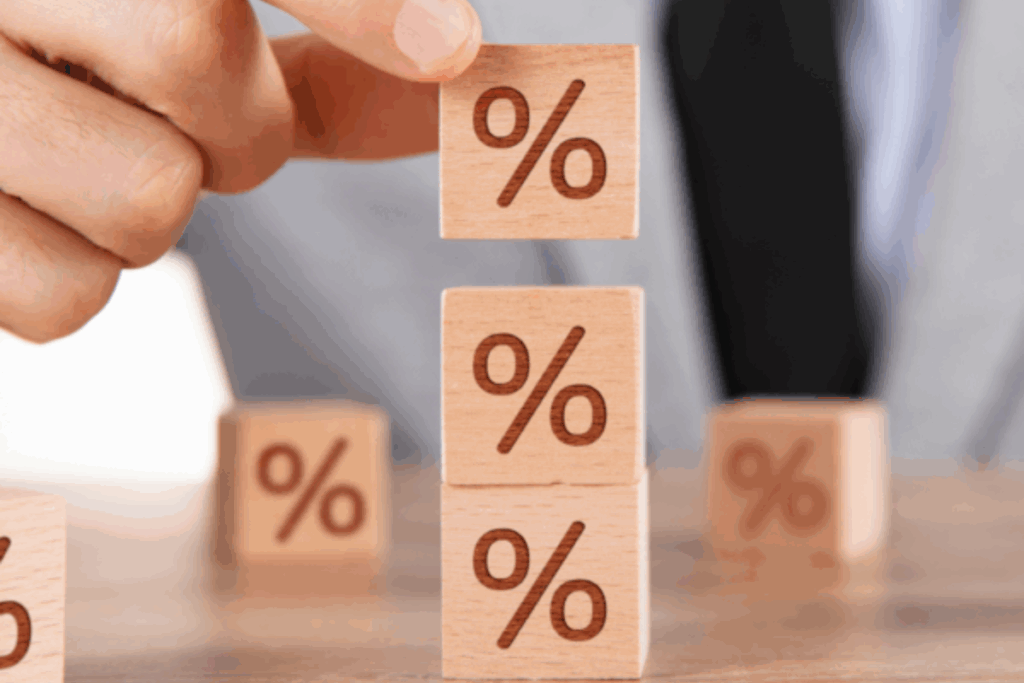Are you looking to increase the overall profitability of your agency, business? To do this, understanding and mastering the calculation of the profit margin rate is essential.
Indeed, just like ROI (Return on Investment), the profit margin rate is a key indicator of your company’s profitability and financial health. Knowing how to calculate and analyze it can help you make informed strategic decisions, optimize your prices, and improve your profit margins.
So, are you ready to unveil the concepts of profitability?
Follow the guide!

Margin rate definition
What is the margin rate?
The mark-up represents the percentage of profit made on each euro spent to produce a good or service. It is calculated by dividing the margin (the difference between the purchase cost and the selling price) by the purchase cost, then multiplying by 100 to obtain a percentage.
The term commercial margin is used for trading activities (purchase and resale), while the term gross or industrial margin is used for production or service activities.
What is the purpose of the margin rate?
Margin calculation is a key financial indicator for any business, and for good reason: it shows how much profit is made on each sale. For entrepreneurs, margin is a key element in financial forecasting.
Depending on the business sector, companies rely on the margin rate to :
- Evaluate the company’s sales performance ;
- Position themselves in relation to their competitors in the same sector;
- Identify the evolution of their sales strategy, whether it is declining or improving;
- Direct development decisions towards the most profitable products;
- Calculate the company’s break-even point.
Understanding and optimizing this rate is therefore crucial to a company’s strategic development and financial sustainability.
Margin calculation
How is the margin rate calculated?
The formula for calculating the margin rate is :
Margin rate(%) = (Gross margin) / Purchase cost ×100
where gross margin is the difference between sales price and purchase cost.
Practical examples of margin calculations
Example 1:
Suppose a product is sold at €20 and purchased at €15. The gross margin would be €5.
Margin rate = (5) / 15 ×100 = 33.33%.
Example 2:
For a service sold at €100 with a production cost of €70, the gross margin is €30.
Margin rate = (30) / 70 ×100 = 42.86%.
These examples illustrate how the margin rate can vary according to the purchase cost and the selling price, directly influencing pricing strategy and financial management decisions. financial management.
Margin rate types
What's the difference between gross margin and net margin?
The gross margin rate represents the percentage of profit made after deduction of the costs of production or purchase of products sold, in relation to sales generated. This rate is crucial, as it reflects the efficiency with which a company produces and sells its products at a price higher than their cost.
The net margin allows you to see how much profit remains for your company after all its expenses have been paid. As for the gross marginThis indicates whether the company has made a profit on its sales.
These two types of margins provide distinct information:
- Lhe gross margin reveals profitability per unit sold.
- The net margin reflects the company’s overall profitability.
As such, the data used for the calculations differ:
- The gross margin is calculated by taking into account amounts incl. VAT (including VAT) of products or services. It is expressed in monetary units
- The net margin is based on amounts excl. (excluding VAT), taking into account all costs associated with the sale. It is expressed as a percentage.
How to calculate gross margin?
For calculate gross marginuse the following formula:
Gross margin = selling price (excl. VAT) – purchase cost.
Example:
If a company produces bags with a production price of €100 and a selling price of €200, the gross margin would be €100.
How to calculate net margin?
For calculate net marginuse the following formula:
Net margin rate = net margin / purchase price excl. tax = (sale price excl. tax – cost price excl. tax) / purchase price excl. tax.
Good to know: the cost price includes all the costs involved in manufacturing a product or providing a service. In the case of a purchase/resale activity, it simply corresponds to the purchase price of the product.
Example: Suppose a company specializing in the purchase and resale of bed linen buys its sheets for 50 euros excluding VAT and resells them for 100 euros excluding VAT (the price excluding VAT being the selling price excluding VAT).
To determine your net marginthe entrepreneur calculates :
net margin = 100 euros – 50 euros = 50 euros
As a result, the company makes a net profit of 50 euros on each sheet sold.

Optimizing margins
How much margin do you need to be profitable?
For a company to be profitable, its margin rate must be high enough to cover not only the cost of goods sold, but also all operating expenses.
The ideal margin rate varies from one business sector to another, but a minimum of 30% is generally recommended to guarantee long-term profitability:
- Retail: Margins are often lower, around 10-20%, due to strong competition.
- Technology: Can reach 40-60% thanks to relatively low production costs after initial development.
- Services: Margins can be high, sometimes up to 50% or more, especially if the service offers unique added value.
How much margin do agencies need to be profitable?
The gross marginThis is more crucial than ever in a context where the agency model has evolved, especially since the Covid-19 pandemic. With the rise of one-off projects in the face of recurring contracts, pressure on margins has intensified. Budgets are shrinking, and decisions are shifting to purchasing departments, making negotiations tougher and imposing strict referencing to collaborate with major advertisers.
To remain competitive, an agency should aim for a gross margin of 35 to 40%. For example, for a budget of €200K, expect a margin of €70-80K, with the remainder allocated to production. Internalizing production or integrating freelancers can optimize this margin, while responding flexibly to customer requirements. In this context, adjusting the scope of work to offer “less for more” can also be an effective strategy.
How to increase your margin?
“How to increase your margins?“This is probably one of the most frequently asked questions. If you find that your margin rate is lower than that of your competitors in a similar sector, several strategies can help you improve it:
- Increase selling prices Evaluate the market to determine whether a price increase is possible without harming your customers.
- Reduce production costs Identify ways of making production more efficient or purchasing materials at lower cost, while maintaining quality.
- Optimize the supply chain: Reduce logistics costs by renegotiating contracts with your suppliers or optimizing delivery routes.
- Simplify business operations: streamline internal processes to reduce costs and increase overall efficiency.
We have set up a purchasing management system that gives us an overview of gross margin profitability for each project, and enables us to monitor it automatically. We are now able to aggregate our gross margin estimates for both actual and forecast sales, enabling us to steer our business.
Amaury Bataille, Managing Director, Monet + Associés Group
Techniques for improving sales margins
To boost your sales marginhere are a few strategies:
- Customer segmentation Segmentation: Identify and focus on the most profitable customers, offering them the right products and services.
- Cross-selling and upselling Increase average transaction value by offering complementary products or upgraded versions.
By implementing these techniques, you can increase your company’s sales marginimproving your company’s financial strength and ability to invest in growth.
Real-time margin monitoring with Furious
Calculate your margin rate in isolation brings little value. It’s essential for every entrepreneur to monitor this rate on a regular basis, whether monthly or annually.
Compare your margin rate with those of your competitors in the same sector. What’s more, by comparing it with your past margins, you can track the evolution of your performance.
You can do this yourself, or be accompanied. If you need help with your bookkeeping, you can use a management software like Furiouswhich also offers real-time tracking. The result? You can adjust your strategies quickly to avoid losses.

